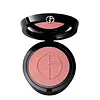What's inside
What's inside
 Key Ingredients
Key Ingredients

 Benefits
Benefits

 Concerns
Concerns

 Ingredients Side-by-side
Ingredients Side-by-side

Water
Skin ConditioningIsododecane
EmollientDiphenyl Dimethicone
EmollientPropylene Glycol
HumectantTalc
AbrasiveCetyl PEG/PPG-10/1 Dimethicone
EmulsifyingMenthone Glycerin Acetal
RefreshingBehenyl Dimethicone
Skin ConditioningDisteardimonium Hectorite
StabilisingPhenoxyethanol
PreservativeDimethiconol
EmollientTrimethylsiloxysilicate
EmollientSodium Dehydroacetate
PreservativeHydrogen Dimethicone
Disodium EDTA
Caesalpinia Spinosa Gum
Skin ConditioningAluminum Hydroxide
EmollientMaltodextrin
AbsorbentTropolone
Skin ConditioningWine
Skin ConditioningCI 77891
Cosmetic ColorantCI 77491
Cosmetic ColorantCI 77499
Cosmetic ColorantCI 77492
Cosmetic ColorantWater, Isododecane, Diphenyl Dimethicone, Propylene Glycol, Talc, Cetyl PEG/PPG-10/1 Dimethicone, Menthone Glycerin Acetal, Behenyl Dimethicone, Disteardimonium Hectorite, Phenoxyethanol, Dimethiconol, Trimethylsiloxysilicate, Sodium Dehydroacetate, Hydrogen Dimethicone, Disodium EDTA, Caesalpinia Spinosa Gum, Aluminum Hydroxide, Maltodextrin, Tropolone, Wine, CI 77891, CI 77491, CI 77499, CI 77492
Ingredients Explained
These ingredients are found in both products.
Ingredients higher up in an ingredient list are typically present in a larger amount.
Ci 77491 is also hydrated iron III oxide. It's sole purpose is to give a red/pink hue to products.
Iron III oxides are classified as inorganic chemicals for coloring.
Synthetically created Ci 77491 is considered safer than those naturally found. This is because the synthetically created version may contain less impurities. Iron oxides are generally non-toxic and non-allergenic.
Learn more about CI 77491Ci 77891 is a white pigment from Titanium dioxide. It is naturally found in minerals such as rutile and ilmenite.
It's main function is to add a white color to cosmetics. It can also be mixed with other colors to create different shades.
Ci 77891 is commonly found in sunscreens due to its ability to block UV rays.
Learn more about CI 77891Talc is a clay mineral. It helps absorb moisture and improve the texture of products. Like other types of clay, Talc can have a slight exfoliating effect on skin. Talc can be added to increase the volume of products.
Some Baby powders are made by combining talc with corn starch. The word "talc" comes from Latin and originates from Arabic. Talc is a mineral commonly found throughout the world.
If you have any concerns about using talc, we recommend checking out the FDA's official page.
Learn more about Talc